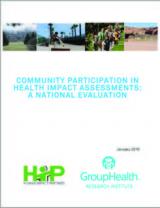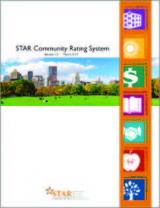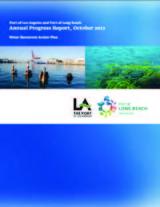Environmental Justice Primer for Ports: Planning and Decision-Making Tools
Port decision-makers and organizations face complex challenges that can benefit from a comprehensive approach to social, economic and environmental priorities. This section shares tools that can help port decision-makers maximize the value of community engagement throughout planning and decision-making processes.
On this page:
Impact assessments
Impact assessment tools evaluate social and environmental impacts on communities, guiding informed selection of strategies and decision-making. The Resources section in the Appendix includes a range of assessment tools to explore.
- Environmental Impact Assessments (EIAs): evaluation of the likely environmental impacts of a proposed project or development, taking into account socioeconomic, cultural and public health impacts.
- Strategic Environmental Assessments (SEAs): a comprehensive process of identifying and evaluating the environmental consequences of proposed policies, plans or programs on par with social and economic considerations. An SEA is considered to be a proactive and sustainability-driven assessment.
- Human Health Risk Assessments (HHRA): a process to estimate the nature and probability of adverse health effects in humans who may be exposed to chemicals in contaminated environmental media, now or in the future.
- Health Impact Assessments (HIAs): a process that helps evaluate the potential health effects of a plan, project or policy before it is built or implemented. An HIA can provide recommendations to maximize positive health outcomes and minimize adverse health outcomes. The Human Impact Partners’ report on Community Participation in Health Impact Assessments Exit discusses the value of authentic community engagement in HIA practice.
-
Social Impact Assessments (SIAs): a systematic review of potential impacts on the day-to-day quality of life of people and communities whose environment is affected by a proposed project, plan or policy change. The Using Social Impact Assessments to Create Opportunities for Communities (PDF) (14 pp, 12.1 MB, About PDF) Exit report presents the process to leverage SIAs for community benefits.
Performance measures
A performance measure is a unit of information measured over time to help evaluate and report progress toward goals. Determine a starting baseline and a desired target to effectively track performance measures over a pre-established period. Performance measures can include inputs (the amount of investment), outputs (the resulting change in operations) and outcomes (the change in the social or environmental conditions). The following resources provide additional considerations for establishing and tracking performance metrics:
- Measurement Tips and Resources for Community Projects (EPA CARE Program) (PDF)(7 pp, 418 K, About PDF)
- Evaluation Metrics Manual: Chapter 6 - Capacity-Building (National Institutes of Health (PDF) (250 pp, 12.2 MB)
The tools below provide a robust set of goals and performance indicators for measuring community quality of life.
- Star Community Rating System (PDF) Exit(133 pp, 9.8 MB): built around eight goals and objectives, including built environment, climate and energy, economy and jobs, education, arts and community, equity and empowerment, health and safety, natural systems, and innovation and process.
- EcoDistricts Protocol Exit: performance standards based on: (1) Imperatives: equity, resilience and climate protection; (2) Priorities: place, prosperity, health and wellness, connectivity, living infrastructure; and (3) Resource Restoration and Implementation: formation, roadmap and performance.
-
Envision Rating System (PDF) (31 pp, 3.1 MB): performance measured by five key indicators – quality of life, leadership (collaboration-based model), resource allocation, natural world, and climate and risk.
Citizen Science and Community-based Participatory Research
Citizen science (also known as community science) can empower communities to better understand local environmental conditions, provide a vehicle for analyzing and sharing that data, and advocate for positive environmental and community change. Citizen science projects recognize the value of engaging the public in scientific investigations. Community members can participate in or lead research efforts both by analyzing existing data and by gathering new data for analysis.
Citizen science is a form of community-based participatory research (CBPR). As defined by the W.K. Kellogg Foundation Community Health Scholars Program, CBPR is a “collaborative approach to research that equitably involves all partners in the research process and recognizes the unique strengths that each brings. CBPR begins with a research topic of importance to the community, has the aim of combining knowledge with action and achieving social change to improve health outcomes and eliminate health disparities.”26 For example, EPA’s Air Sensor Toolbox for Citizen Scientists provides information and guidance on new low-cost compact technologies for measuring air quality.
Monitoring and reporting
Strategic plans and project action plans can include periodic monitoring and assessment timelines. Measuring indicators of performance can help assess progress toward port and community goals. When identifying what to monitor and report, consider employing citizen science (also known as community science and described to the right) to engage the community in monitoring an issue of concern. Reporting back to the community helps bring transparency and accountability to port operations. Prioritizing social media communications can help reach individuals with limited desktop computer access or people with limited ability to comment at in-person meetings.
- Annual Progress Reports (APRs): track progress on individual goals, action plans or all performance indicators comprehensively. The Port of Long Beach’s APR shares business, environmental and social responsibility accomplishments.
- Newsletters: easily accessible media that can share port progress updates with a wide audience. Newsletters can be published regularly to encourage ongoing community engagement.
- Web updates and social media announcements: share regular updates, request feedback and build relationships.
-
Programs and events: ongoing activities provide opportunities for education, building awareness and problem-solving focused on shared port and community issues.
CASE STUDY 4 | The Port of Portland: Swan Island Air Quality Project
The Port of Portland funded a two-year community involvement program in coordination with a study that explored levels of chemical emissions from nearby industrial facilities and the potential for exposure and health impacts on the local community. The port identified environmental, political and business reasons to conduct the study and sought data in a conscientious and careful manner. The port created a Task Force that included the shipyard operator, the Oregon Department of Environmental Quality, three neighborhood associations, and two outside experts on toxic health and environmental issue communications. Through this initiative, the shipyard operator agreed to eliminate certain paints, improved practices and changed operational technologies, provided a model for technical and community input on the state hazardous air pollution program, increased public education, and improved relations between communities, businesses, agencies and the port.



